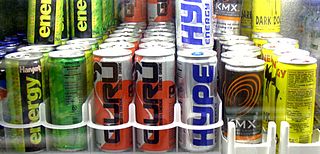Mixing alcohol with energy drinks (A+ED) has become increasingly popular among adolescents and young adults, and is also associated with numerous harms.
Given that a relationship exists between A+ED use and heavy drinking, it is potentially important to understand different motivations for both alcohol and A+ED consumption. A new study has found that hedonistic motives related to sensation and pleasure ideals are highly implicated in A+ED consumption, as well as its relationship with alcohol dependence (AD) and experiences of harm and aggression.
Results will be published in the July 2014 online-only issue of Alcoholism: Clinical & Experimental Research and are currently available at Early View.
“Several Australian studies have shown that consumption of A+EDs has become popular in Australia, similar to trends in the U.S. and throughout Europe,” said Nic Droste, a doctoral student and researcher in the school of psychology at Deakin University in Australia. “One large study that conducted patron interviews in the nightlife districts of five Australian cities found that approximately 15 percent of patrons had consumed A+EDs at the time of interview. They also found that A+ED users had higher blood alcohol concentration readings than non-A+ED users.”
“Recent survey research by our group indicates that just under half of young adults surveyed reported mixing alcohol with energy drinks in the previous six months,” added Amy Peacock, a researcher in the school of medicine/psychology at the University of Tasmania. “This is quite similar to rates reported internationally in university student samples. Consumers in Australia typically report consuming A+EDs in excess of recommended intake guidelines, however it is important to note that this excess alcohol consumption also occurs when people are drinking alcohol without energy drinks.”
“‘Hedonism’ is a commonly used term in the alcohol field which, in this case, refers to people who are trying to increase pleasure and enjoyment, as opposed to other motivations for drinking such as taste, energy, sociability, or to increase or decrease intoxication,” added Droste.
Droste and his colleagues asked 594 university students (395 females, 199 males), with a mean age of 22.3 years, in Victoria, Australia to complete an anonymous online survey in 2012. The sample was limited to participants who had reported consuming A+EDs in the previous three months. The 14 items measuring motivations for A+ED consumption subsequently identified four factors – categorized as hedonistic, social, energy/endurance, and intoxication-reduction motives – as pertinent.
“Our study is the first to show that people’s motivations for mixing A+EDs can help to predict whether or not they experience negative outcomes like aggression and violence, alcohol-related injury, and can also indicate their risk for AD,” said Droste.
“It is particularly noteworthy that people who reported using alcohol and energy drinks for ‘hedonistic motives’ – that is, for the taste or the ‘buzz’ – are at higher risk of reporting one, greater alcohol and ED intake, two, alcohol dependence, and three, being in an accident, being injured, or experiencing aggression whilst intoxicated,” added Peacock.
“Hedonistic motives like pleasure seeking and desire for drunkenness have been linked to heavy alcohol use in the past, so the fact that similar motives were implicated with heavier A+ED use makes sense,” said Droste. “This study is unique because it is the first to link the distinctive motives for combined A+ED use with negative outcomes and increased alcohol consumption.”
Droste said one result was a bit surprising. “People who drank A+EDs to sober up were actually at an increased risk of experiencing alcohol-related injuries and harms,” he said. “This finding is interesting because it could mean that consumers are incorrect if they are assuming that drinking caffeine might reduce their intoxication.”
He added that there could be a number of reasons for this misbelief. “Energy drinks are advertised as providing a boost to attention and mental and physical performance,” he said. “It could be that this marketing strategy leads drinkers to believe that energy drinks could cancel out some of the effects of alcohol. Beyond this, hundreds of movies and TV shows have shown coffee as being a cure-all for drunks that need to sober up quickly. Maybe this is the latest phase of a long-standing myth that caffeine will help people sober up faster so that they can fool their boss, their spouse, the police, their bartender, or the security guard at the door!”
“These results suggest that different motivations for consuming alcohol with energy drinks are associated with greater risk of certain alcohol-related harms,” said Peacock. “Consequently, we need to develop education campaigns targeted at those consumers who are driven in their beverage choice by these motives to make sure they are accurately informed about the potential effects of mixing the two beverages together, and are aware of the current Australian recommended intake guidelines for alcohol and energy drinks.”
“Staying vigilant is definitely the core message here,” said Droste. “Mixing alcohol with energy drinks is still a fairly new drinking behavior so there will be plenty of new research coming out explaining what is safe and what should be avoided. Until then, pay attention to the warning labels on packaging of energy drinks and alcohol, they’re there for a reason. Finally, drinkers need to know that they shouldn’t be using energy drinks in an attempt to sober up and reduce their drunkenness. Our study has linked this behavior to increased harm and injury.”
Peacock agreed. “People need to be proactive about seeking accurate information about mixing A+EDs, and consider their motivations for consuming these beverages, as well as the potential consequences of use,” she said.


